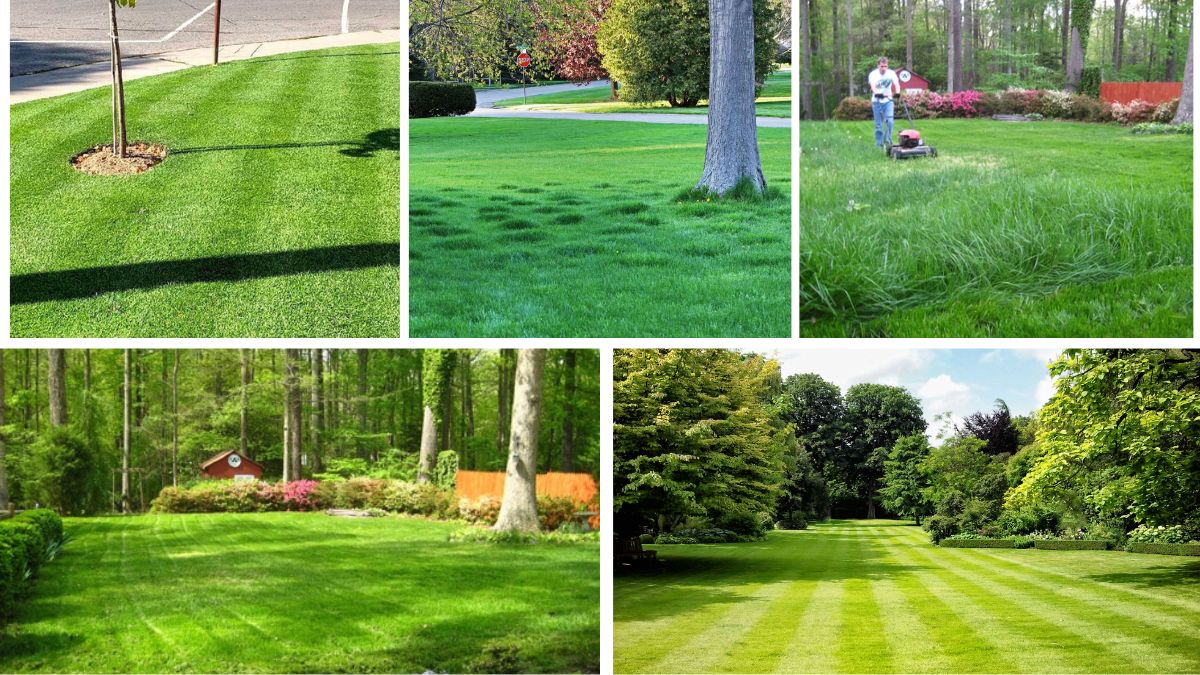A thick, green, and healthy lawn is the pride of every gardener, but over time, even the most carefully maintained turf can become thin, patchy, or uneven. Overseeding is one of the most effective ways to revitalize your lawn, improve its density, and keep it resilient against weeds, disease, and stress from heavy foot traffic.
In this article, we’ll guide you through why overseeding is important, when and how to do it, and the steps to ensure your lawn thrives after overseeding.
What is Overseeding?
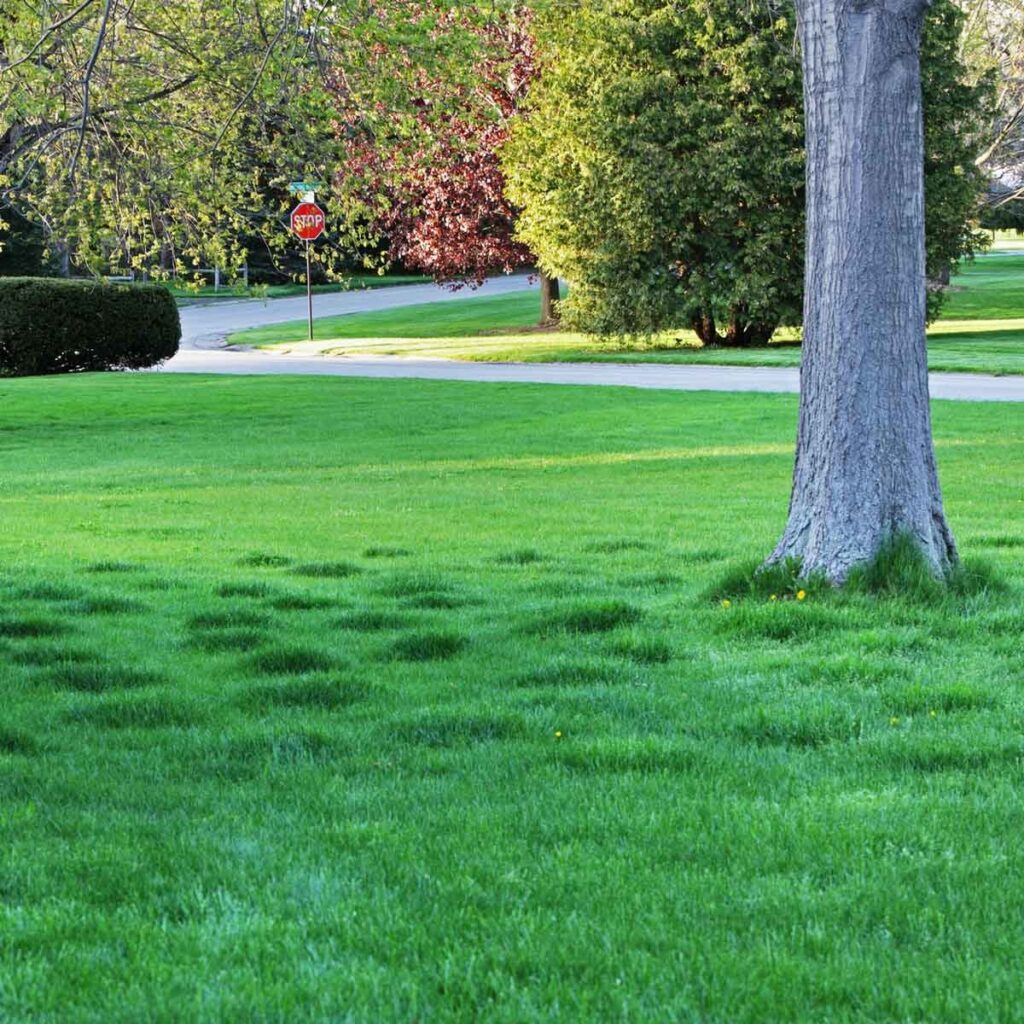
Overseeding is the process of planting grass seed directly into an existing lawn without tearing up the turf or starting from scratch. It’s a simple but powerful technique that allows you to:
- Fill in thin or bare patches.
- Introduce new grass varieties for improved color, texture, or disease resistance.
- Reduce weed invasion by promoting thicker turf.
- Revitalize lawns that have become worn from drought, heavy use, or aging.
Overseeding is suitable for most lawn types, including cool-season grasses (like Kentucky bluegrass, fescue, and ryegrass) and warm-season grasses (like Bermuda and zoysia), though the timing and methods differ slightly.
Why Overseeding is Important
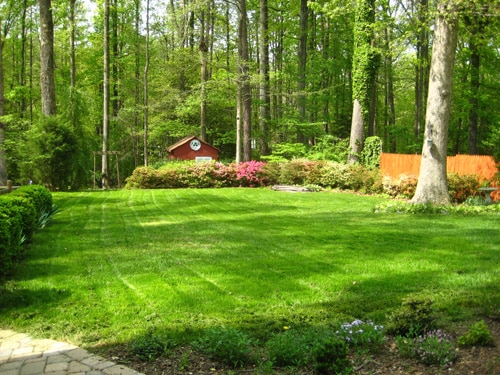
Even well-maintained lawns benefit from overseeding. Here’s why:
- Restores Lawn Density – Thin lawns are more susceptible to weeds, disease, and erosion. Overseeding fills gaps and strengthens turf.
- Improves Lawn Health – New seeds introduce fresh genetic material, making the lawn more resilient to pests, drought, and temperature fluctuations.
- Enhances Appearance – Overseeding creates a uniform, vibrant green lawn, eliminating patchy or worn areas.
- Reduces Weed Competition – Thick grass crowds out weeds, reducing the need for herbicides.
- Extends Lawn Life – Regular overseeding can rejuvenate older lawns, preventing the need for a full lawn replacement.
Best Time to Overseed Your Lawn
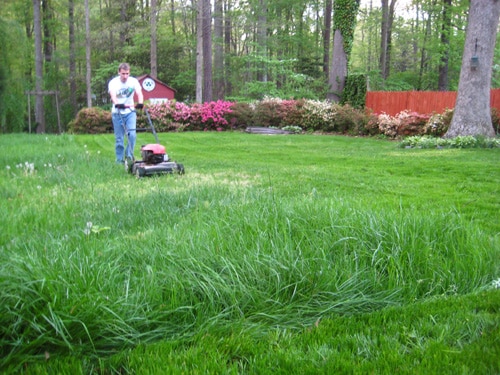
Timing is crucial for overseeding success, and it depends on your grass type:
- Cool-season grasses: Early fall (late August to mid-October) is ideal because soil is still warm, promoting seed germination, while cooler air temperatures reduce stress. Spring is a secondary option, though weeds may compete more aggressively.
- Warm-season grasses: Late spring to early summer, when soil temperatures rise and the grass is actively growing, is best.
Avoid overseeding during extreme heat, frost, or drought, as these conditions reduce seed germination and increase plant stress.
Step 1: Prepare Your Lawn
Proper preparation ensures seeds make good contact with soil and can germinate successfully:
- Mow Your Lawn – Cut the grass shorter than usual, about 1–2 inches, to reduce competition and allow sunlight to reach seeds.
- Rake Thoroughly – Remove debris, dead grass, and thatch (a layer of organic matter) to expose the soil.
- Aerate the Soil – Use a core aerator to create small holes in the soil, improving water and nutrient penetration while providing a landing spot for seeds.
Tip: Lawns with heavy thatch may require dethatching before overseeding for best results.
Step 2: Choose the Right Seed
Selecting the right grass seed is essential:
- Match the seed to your existing lawn species to ensure uniformity.
- For cool-season lawns, consider Kentucky bluegrass, fescue, or perennial ryegrass.
- For warm-season lawns, consider Bermuda, zoysia, or buffalo grass.
- Look for high-quality seed blends that include disease-resistant varieties.
Pro tip: If your lawn is thin due to disease or wear, choose a hardy variety to boost resilience.
Step 3: Apply the Seed

Even distribution is key for uniform growth:
- Use a Broadcast Spreader – Spread seeds evenly across the lawn, following the recommended seeding rate on the package.
- Focus on Bare Spots – Apply a slightly higher rate in areas with visible thinning.
- Lightly Rake or Roll – Gently work seeds into the soil or press them down with a lawn roller to improve soil contact and germination.
Tip: Avoid scattering seeds in clumps; uneven distribution leads to patchy growth.
Step 4: Water Properly
Consistent moisture is crucial for seed germination:
- Immediately after seeding, water lightly to moisten the soil without washing seeds away.
- Keep soil consistently damp until seedlings emerge, typically 10–21 days depending on the grass type.
- Reduce watering gradually as seedlings establish, transitioning to deeper, less frequent watering to encourage strong root growth.
Avoid overwatering, which can cause seeds to rot, and under-watering, which can prevent germination.
Step 5: Fertilize Appropriately
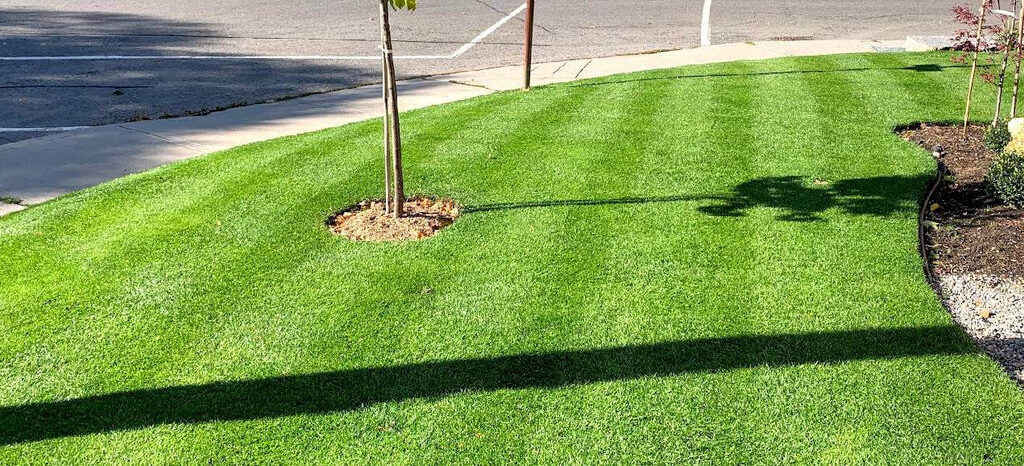
New seedlings need nutrients to thrive, but over-fertilization can damage young plants:
- Apply a starter fertilizer high in phosphorus to encourage root growth.
- Avoid high-nitrogen fertilizers initially, which promote leaf growth over roots.
- Follow label instructions carefully and avoid multiple heavy applications.
Step 6: Mow at the Right Height
Once the new grass reaches 3–4 inches, start mowing:
- Use a sharp mower blade to avoid tearing young grass.
- Only remove the top third of the grass blade to prevent stress.
- Mowing helps strengthen the roots and encourages dense turf.
Step 7: Maintain Your Overseeded Lawn
After overseeding, ongoing care ensures long-term success:
- Weed Control: Avoid using herbicides until the new grass is established (usually 4–6 weeks).
- Fertilization: Apply balanced fertilizer after 4–6 weeks to support growth.
- Aeration and Mulching: Annual aeration helps maintain healthy soil structure and nutrient flow.
- Monitor for Pests and Disease: Keep an eye out for fungal issues or insect damage, particularly in warm, humid climates.
Common Mistakes to Avoid
- Skipping Lawn Preparation – Seeds need good soil contact to germinate.
- Seeding During the Wrong Season – Hot summers or frosty winters reduce success rates.
- Overwatering or Underwatering – Both extremes harm seedlings.
- Using Low-Quality Seed – Cheap seed often has low germination and may include weeds.
- Neglecting Fertilization – Proper nutrients help seedlings establish quickly.
Benefits of Overseeding
By following proper techniques, overseeding can:
- Increase turf density and thickness.
- Reduce weed invasion naturally.
- Improve lawn color and texture.
- Extend the lifespan of your existing lawn.
- Create a resilient, drought-tolerant, and disease-resistant lawn.
Overseeding is a simple investment that pays off with years of a beautiful, healthy lawn.
Conclusion
Overseeding your lawn is one of the most effective ways to achieve lush, vibrant, and resilient turf. By preparing your lawn, choosing the right seed, applying it correctly, watering consistently, and maintaining proper care, you can transform a thin, patchy lawn into a dense, green carpet.
Whether you’re dealing with bare patches, thinning grass, or simply want to improve the look and health of your lawn, overseeding is a strategy every gardener should master. With patience, attention to detail, and consistent care, your lawn can become a source of pride and enjoyment all year round.
